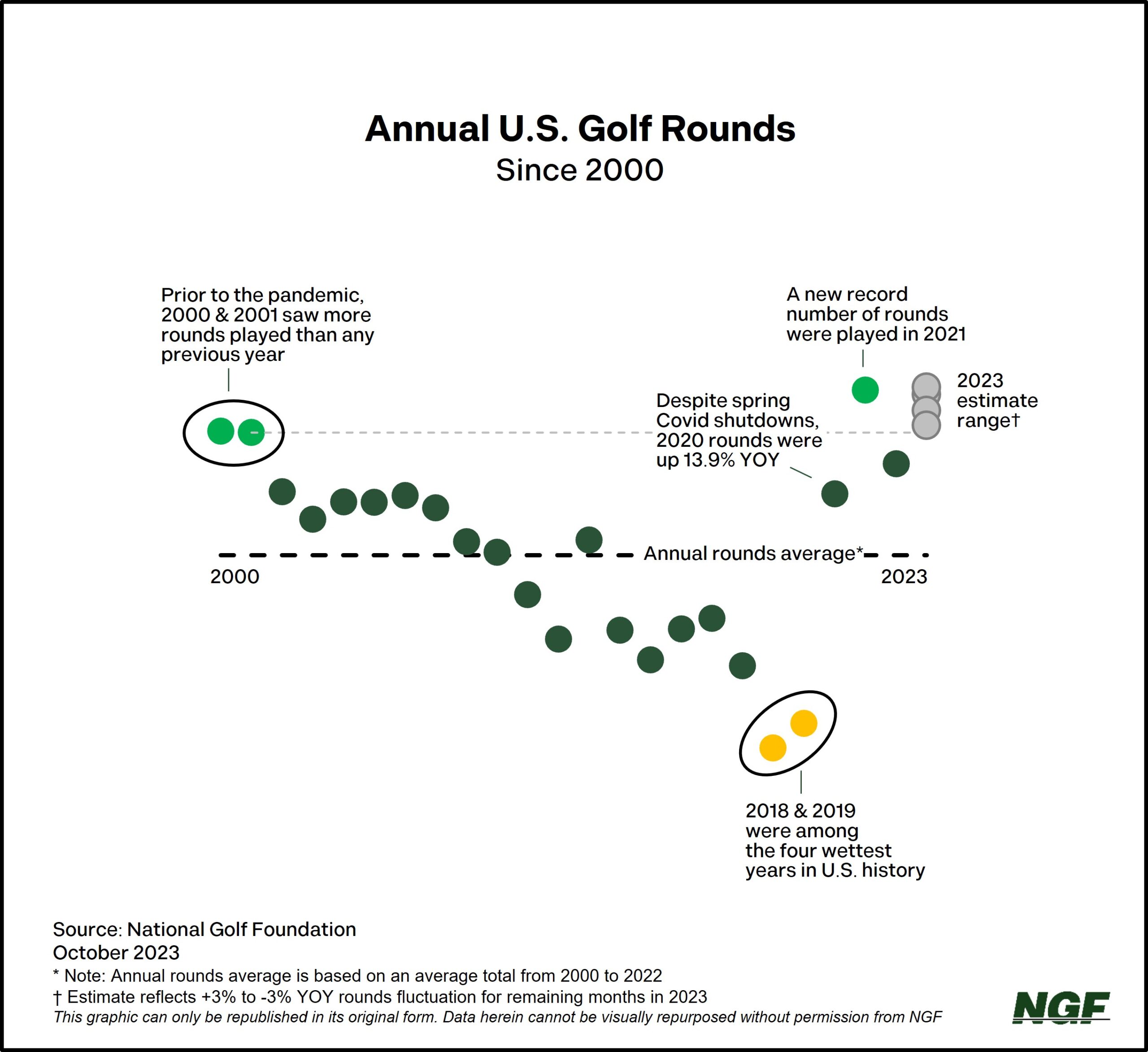What’s Next After Standout Summer?
(
Peak golf season is in the rearview mirror.
There are fewer daylight hours, temperatures are dipping, leaves are falling, and, in some parts of the country, golf facilities are beginning the process of shutting down until next year.
It was a strong summer for golf.
The latest national rounds data – through the end of August — indicates year-to-date play is up about 4% compared to the same period a year ago.
But how does play through the end-of-summer stack up versus recent pre-pandemic years and compared to 2021, which saw record levels of play throughout the U.S.?
In a nutshell: demand has remained strong, especially in golf-rich parts of the country with shorter seasons than in the Sunbelt.
At the start of September, rounds were trending 17% ahead of the three-year average from 2017-2019, and about 1% above 2021.
The most notable gains thus far have been in the Mid Atlantic (+10% YTD), East North Central (+8.5%) and West North Central (+8.1%) regions, a population-dense swath from the Northeast to the upper Midwest. Consider that the 15 states in those three regions – from New Jersey to Nebraska – have over 6,800 golf courses and 9.3 million on-course golfers between them.
If fall weather is favorable for golf in these seasonal states, it could help push 2023 toward a record-setting year for play.
The most significant late season impacts on play will come in the Sunbelt, however.
States like Florida and Texas are coming off the second-hottest June-to-August stretch on record. In the Sunshine state, that included the highest average July and August temperatures in the 129 years on record for the National Oceanic and Atmospheric Administration. Florida’s August play was down almost 10% YOY. In Arizona, average July temperatures reached record levels, contributing to an -8% dip in rounds. Arizona’s average temps in August weren’t quite as severe – only top 10 on record – and rounds were down 4%.
2023’s chances of being a record-setting year for play will boil down to… well, weather, rather than whether the appetite to play still exists. States like Arizona, California, Florida, and Texas count almost 3,400 courses and over 6.6 million golfers between them, a figure that doesn’t account for annual influx of snowbirds and traveling golfers from cold weather climates.
We’ll be watching the numbers closely and keeping you informed as the final months of the year play out.
Short Game.
"*" indicates required fields
How can we help?
NGF Membership Concierge

"Moe"
Learn From NGF Members
 Ship Sticks Secrets to a Hassle-Free Buddies Golf Trip
Ship Sticks Secrets to a Hassle-Free Buddies Golf Trip
Whether you’re the head planner of your upcoming buddies golf trip or simply along for the ride, we’ve gathered a few easy ways to keep everyone in your group happy.
Read More... Golf Course Turf, Soil and Water Quality Diagnostic Testing
Golf Course Turf, Soil and Water Quality Diagnostic Testing
As humans, we see our primary care physician on a regular basis to proactively evaluate our vital signs. Likewise, a superintendent should perform frequent diagnostic testing on their golf course.
Read More... Unlocking Distance: Launch Conditions and Angle of Attack
Unlocking Distance: Launch Conditions and Angle of Attack
We’ve long known that higher launch and lower spin is a powerful combination for generating consistently long and straight tee shots. A key factor in optimizing launch conditions, one often overlooked, is ...
Read More...




